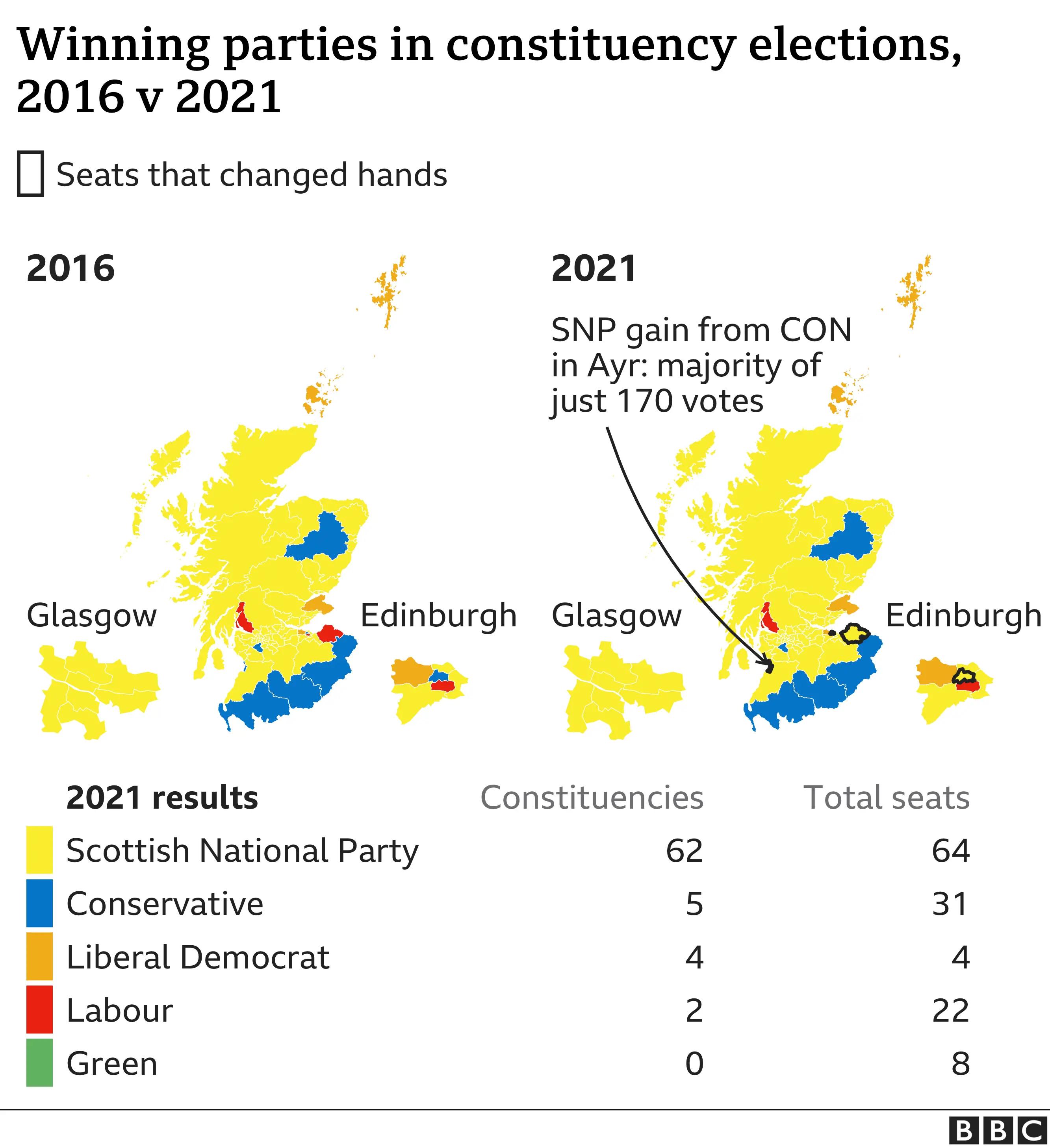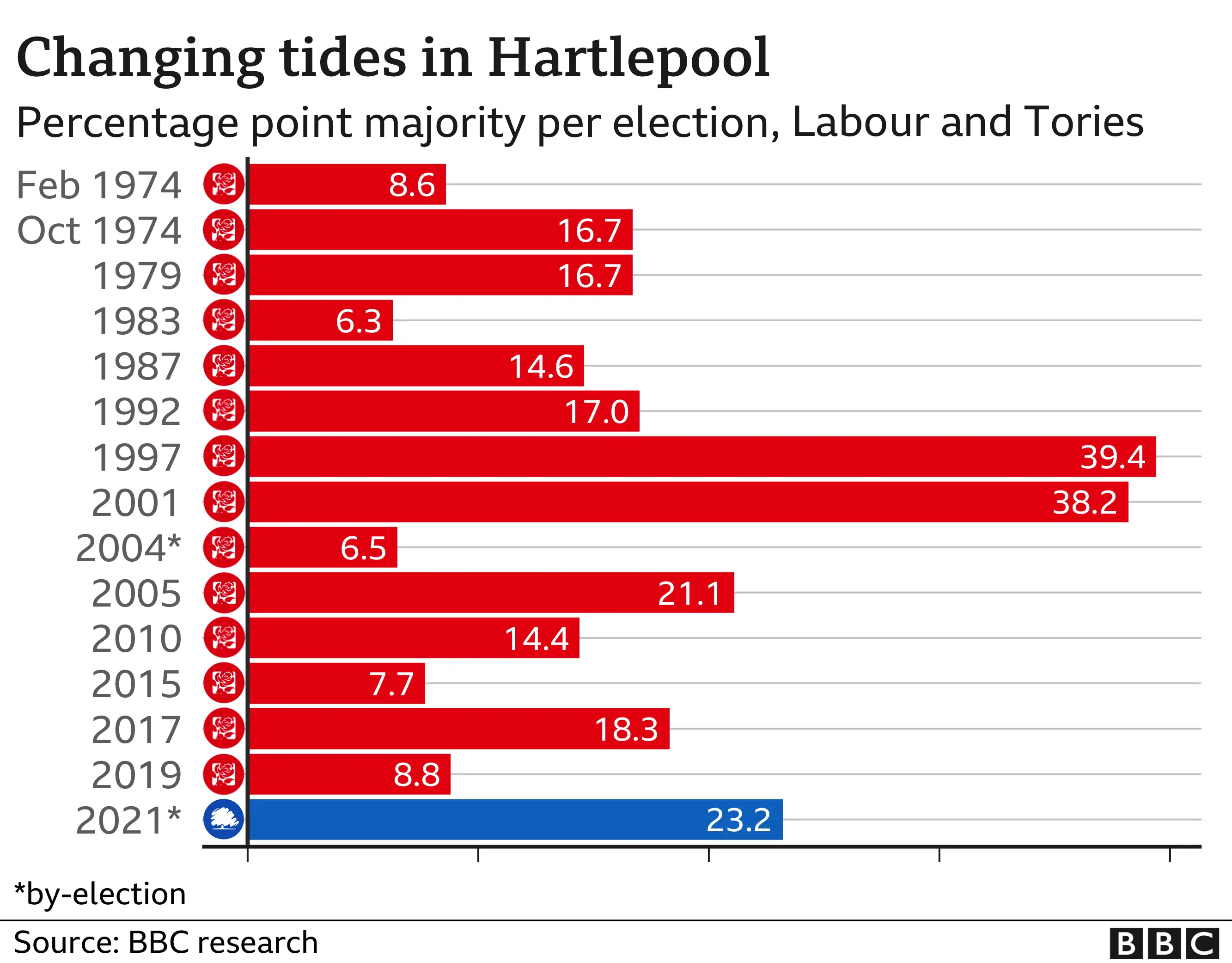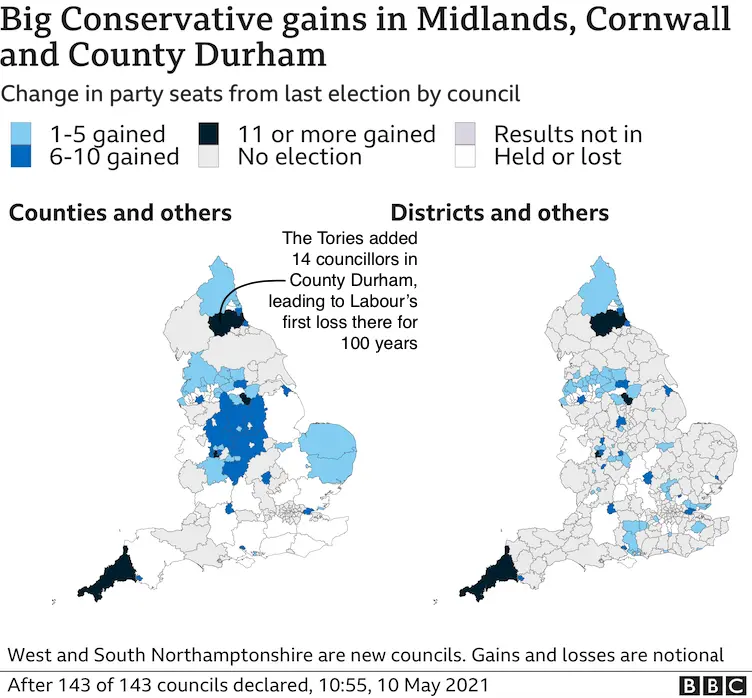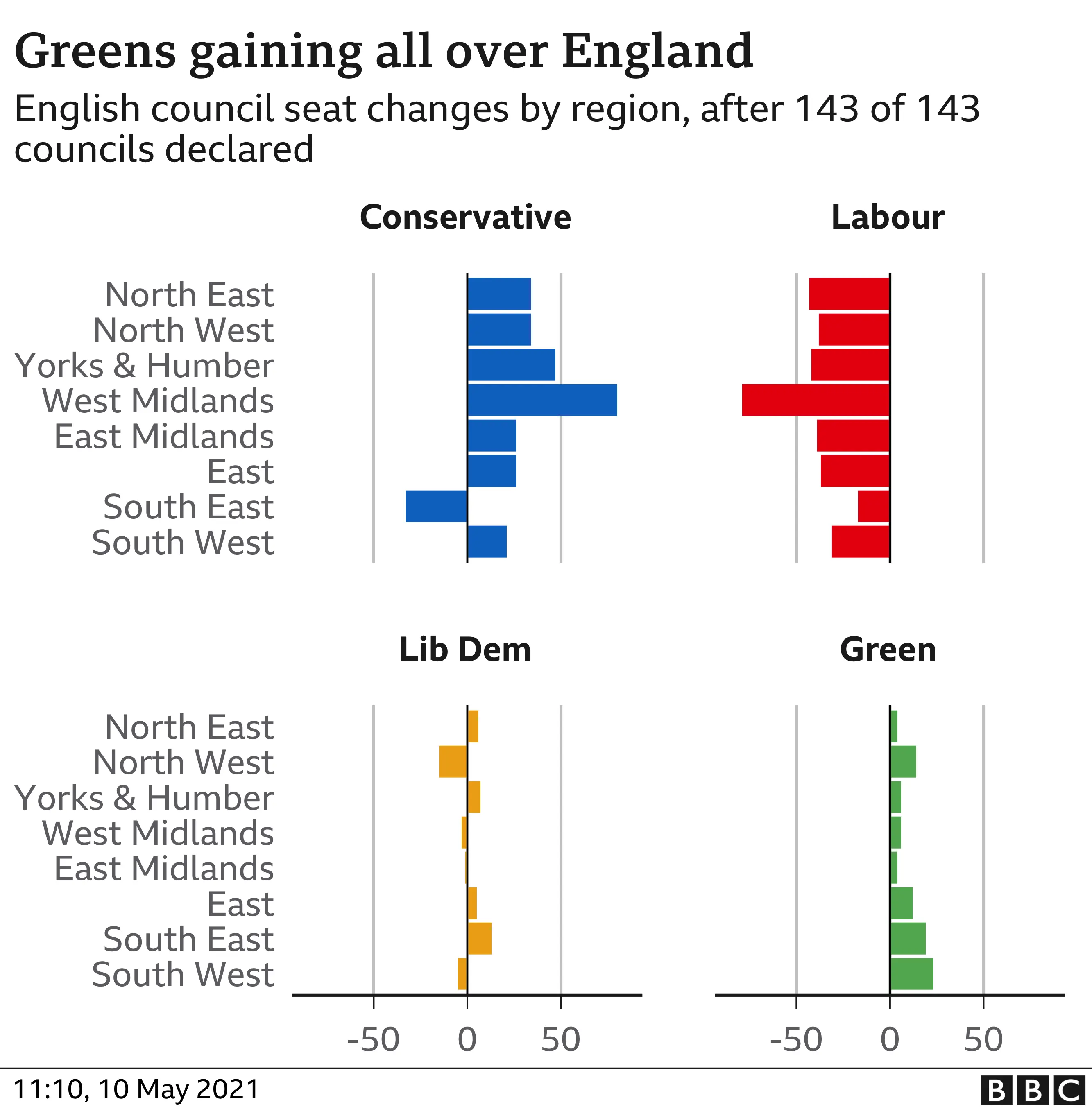Election 2021: The six key takeaways in maps and charts
 BBC
BBCAs the dust settles on a bumper crop of elections, a chance to sit back and try and work out exactly what happened.
From fresh questions about Scottish independence to the lingering impact of the Brexit vote, what do we know now that we didn't on Thursday?
1. Majority for independence in Scottish Parliament
In Scotland, the SNP held on to power for an historic fourth term, but fell just one seat short of an overall majority.
That means, together with the Scottish Greens, there is now a majority of 15 in favour of independence in the Scottish Parliament.
But analysis by Professor Sir John Curtice suggests this is not the whole story.
In Scotland, people have two votes - one for a constituency MSP, and another for a regional ballot, where additional MSPs are allocated from party lists depending on how many votes the parties get.
In the constituency vote 49.0% backed pro-independence parties, and in the list vote it was 50.1%.

Scotland's First Minister Nicola Sturgeon has said her focus in government would be on leading the country through the pandemic and keeping people safe from Covid.
But she added that "when the crisis has passed, it is to give people in Scotland the right to choose their future" in a referendum.
But the UK government is fighting this, with Cabinet Office minister Michael Gove saying the SNP could not expect one to be approved as the party did not secure a majority in the Scottish Parliament.
2. Conservatives gaining ground in England after 11 years in power
Traditionally, voters use Westminster by-elections and other polls between general elections, to give the sitting government a kicking, particularly when they've been in power a while.
But the performance of the Conservatives in England means we might need to re-think that idea.
One of the first results to come in was the by-election to select the new Hartlepool MP.
Conservative Jill Mortimer won a seat that had been in Labour hands since its creation in 1974, and by a significant margin as well - 23.2%, or nearly 7,000 votes.
This was only the second by-election gain for a governing party since Margaret Thatcher's Conservatives won amid the backdrop of the Falklands War in 1982.

And things didn't get much better for Labour in the council elections.
The Conservatives took Harlow council in Essex - sometimes seen as indicator of the national mood - and continued to make gains in both councils and council seats across the rest of England throughout the weekend.
They now control over a dozen more councils than they did before and there are more than 200 extra Tory councillors.
Which councils changed hands?
In contrast, Labour lost control of eight councils and more than 300 seats. One of the councils the party lost, County Durham, had been under Labour control for more than 100 years, since 1919. It was the first council the Labour Party ever ran.

The only areas where there may be some cause for Conservative concern is among their traditional heartlands of the shire councils in the south - lots of the areas coloured white on the map above because they lost seats or failed to gain any.
It hasn't been damaging enough yet to actually lose control in many councils - only Cambridgeshire, the Isle of Wight and Tunbridge Wells - but something to keep an eye on perhaps.
3. Rewards for governments managing Covid
As well as the Conservatives in England and the SNP in Scotland, Labour in Wales bucked the trend of long-standing parties of power struggling at election time, in the context of handling a massive international crisis and the immediate boost of a world-leading vaccine programme.
Welsh Labour equalled their record of securing 30 out of the 60 Senedd seats.
First Minister of Wales Mark Drakeford, whose profile has been prominent as part of the Welsh Covid response, increased his personal majority by more than 10,000 votes, from 3.7 percentage points to 30.7.
Labour also gained the seat of former Plaid Cymru leader Leanne Wood in Rhondda, but they lost Vale of Clwyd to the Conservatives, by fewer than 500 votes.
This left them just short of an outright majority - a feat no party has yet achieved in Wales.

4. Labour still strong in England's big city areas
Another area Labour supporters can look to for positives are the mayoral elections in some of England's biggest city regions.
Labour's success here gives an idea where their new heartlands might be, as the political map is still being redrawn following the Brexit vote of 2016.
Sadiq Khan won again in London, from second preference votes after a first round that was closer than expected. Tory candidate Shaun Bailey came second.

Andy Burnham won easily in Manchester with an increased majority, and Labour took control of the West of England and Cambridgeshire & Peterborough from the Conservatives.
They also held on to the combined authority mayoralties in Liverpool, the West of England and won all five single authority mayors that were up for grabs. The party also won the newly created Mayor of West Yorkshire.
The Conservatives did win two mayoral elections. Andy Street won in the West Midlands and Ben Houchen got a whopping 73% of the vote in the Tees Valley.
They also won 30 of the 39 Police and Crime Commissioner elections declared so far, including ten gains.
5. Leave-Remain divide still relevant five years on
There have now been two general elections since the June 2016 EU referendum, both of which saw the Conservatives' support increase among Leave voters while Labour performed better with Remainers, according to analysis from Professor Curtice.
But for some council wards Thursday's vote was the first new election since May 2016, one month before Britain voted to leave the EU.
If we look just at those areas, there was a swing from Labour to the Conservatives of six percentage points overall.
But the swing was just one point in areas that voted Remain, compared to 11 points in the most heavily pro-Leave places.
In pro-Remain places which last voted in 2017, there was a swing to Labour of three points. In Leave areas there was a two-point move in the Conservatives' direction.
6. Good night for the Greens
As well as the Scottish Greens gaining two seats, the Greens in England increased their presence in every region.
In total they won more than 80 seats - but were unable to control any individual council.

They also finished ahead of the Lib Dems in London as the third party. Professor Curtice says they are now the fourth party in the UK.
For the Lib Dems on the whole it was more of a muted success. They took control of St Albans Council and held on to the six they were defending.
They lost a seat in Scotland but won one in the London Assembly. And in terms of councillors, their gains and losses in different areas more or less balanced each other out.
Data journalism by Daniel Dunford, John Walton, Will Dahlgreen, Ed Lowther, Christine Jeavans, Becky Dale, Maryam Ahmed, Wesley Stephenson and Alison Benjamin. Design by Debie Loizou, Prina Shah and Gerry Fletcher. Development by Marcos Gurgel, Scott Jarvis, Catriona Morrison, Becky Rush, Steven Connor, Toby Cox, Shilpa Saraf, Adam Allen and Sally Morales

- ENGLAND: Election results in full
- SCOTLAND: Election results in full
- WALES: Election results in full
- LONDON: Election results in full

